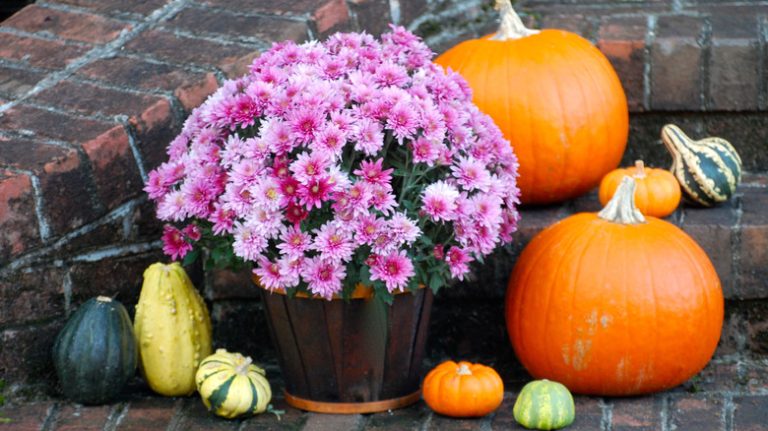Lilies are a beautiful and vibrant addition to any garden. Known for their trumpet-shaped blossoms and wide range of colors, lilies are a symbol of peace and tranquility. There are many varieties of lilies, some of which are more common than others. The most frequently seen types include the Asiatic, Oriental, Trumpet, and Martagon lilies. Each variety has its own unique characteristics and uses in the garden.
Lilies are bulb plants, which means that they are grown from bulbs. When planting lily bulbs, it’s important to choose a well-draining soil that is rich in organic matter. Lilies require full sun exposure to thrive, although some varieties can handle partial shade. They can be grown in USDA hardiness zones 3-9, depending on the variety.
One of the most important aspects of lily care is staking. As lily plants grow, they can become top-heavy and may require support to prevent them from falling over. Staking can be done using bamboo stakes or other similar materials. It is best to stake the plants early in their growth to prevent damage to the flowers and physical support to the foliage.
Lilies generally require minimal care once established. Regular watering is important, especially during dry periods. Lilies prefer slightly acidic soil, so adding a bit of lime may be necessary if your soil is too acidic. Additionally, applying a layer of mulch around the plants can help to retain moisture and suppress weed growth. It’s also important to remove any faded flowers or yellowing foliage to promote new growth.
When it comes to buying lilies, there are several options available. You can shop for lily bulbs online or visit a local garden center. Many online retailers offer a wide selection of lily bulbs, including rare and hard-to-find varieties. Some common lily varieties that are easily available include the Peace Lily, the Stargazer Lily, and the Casablanca Lily. These varieties are known for their beautiful flowers and fragrant scent.
In conclusion, growing lilies can be a rewarding and enjoyable experience. With proper care and attention, these beautiful flowers can thrive in your garden, adding color and elegance. Whether you’re a seasoned gardener or a beginner, this guide provides the basics for successfully growing lilies. Thank you for reading!
Lilies
Lilies are beautiful and vibrant flowers that can make a stunning addition to any garden or landscape. These flowers are known for their various colors and trumpet-shaped blossoms. If you are interested in growing lilies, this guide will provide you with the necessary information to get started.
When it comes to planting lilies, it is important to consider their companions. Lilies grow well in the company of plants such as daylilies, hostas, and astilbes. These companion plants help create a beautiful and diverse garden.
There are several different types and varieties of lilies, although the most common ones include Oriental lilies and Asiatic lilies. Oriental lilies are known for their large and fragrant flowers, while Asiatic lilies are admired for their wide range of colors.
Before planting lilies, it is important to learn about their preferred growing conditions. Lilies thrive in well-draining soil with a pH level between 6 and 7. You can find lily bulbs at your local nursery or online shop. Just be sure to choose bulbs that are firm and free from any signs of damage.
Once planted, lilies require care to ensure their optimal growth. They should be watered regularly, especially during dry spells. Lilies should also be fertilized frequently using a balanced fertilizer. Staking may be necessary to support taller varieties that may bend under their own weight.
Lilies are generally low-maintenance plants, but there are still some common questions that arise when it comes to their care. For example, some people wonder what to do with lily bulbs after they have finished flowering. It is best to leave the foliage intact until it yellows and withers, as this helps provide nourishment for future growth.
It is worth noting that while lilies are beautiful, they can be poisonous to cats. If you have cats, it is important to keep them away from your lily plants.
In conclusion, lilies are a true delight to grow, given the right conditions. Their stunning flowers and captivating fragrances can enhance any garden or landscape. Whether you are a beginner or an experienced gardener, this guide provides a detailed overview of growing and caring for lilies. Start planting these marvelous flowers and enjoy their beauty in your garden!
About Lilies
Lilies are beautiful, fragrant flowers that come in a wide range of colors and varieties. They are a favorite choice for many gardeners due to their stunning blooms and ease of care.
There are several types of lilies, including asiatic, trumpet, and oriental lilies. Asiatic lilies have wide, trumpet-shaped flowers and are known for their vibrant colors. Trumpet lilies, on the other hand, have large, trumpet-shaped blooms that can reach up to 9 inches in diameter. Oriental lilies are highly fragrant and come in a wide range of colors, making them a popular choice for flower enthusiasts.
When it comes to growing lilies, it is imperative to start with high-quality bulbs. This can be done by purchasing bulbs from a reputable garden shop or online sources. Before planting, it is important to learn about the specific requirements of each variety, such as their preferred soil type, exposure to sunlight, and watering needs.
Lilies generally prefer well-draining soil and full sun to partial shade exposure. Some varieties, like asiatic lilies, can tolerate colder temperatures and are suitable for growing in zones 3-9. Others, like oriental lilies, are more suited for milder climates and thrive in zones 5-9.
In terms of care, lilies require regular watering, especially during their blooming period. It is also important to mulch around the plants to retain moisture and suppress weed growth. Pruning the stems after flowering and removing any dead foliage in the winter months will help promote healthier growth in the following season.
While lilies are generally easy to grow, there are a few things to keep in mind. Some lilies, like the martagon lily, can be poisonous to pets and should be avoided if you have animals in your garden. Additionally, not all lilies are winter hardy, so it’s important to choose varieties that are suitable for your climate.
Whether you’re a beginner or an experienced gardener, a guide to growing lilies can provide valuable information and tips to help you succeed in cultivating these beautiful flowers. So, get started and enjoy the beauty and fragrance that lilies bring to your garden!
A Guide to Growing Lily Flowers
The botanic name for lily is Lilium, which is a common flowering plant found in gardens all over the world. Lilies are known for their beautiful and fragrant blossom, and are often used in media and symbolism. There are many different types of lilies, ranging in color, size, and shape. Some of the most common varieties include Asiatic lilies, Martagon lilies, and Oriental lilies.
When growing lilies, it is important to take care of them properly. Lilies prefer to be planted in well-drained soil and given full sun exposure. However, they can also tolerate some shade. Lilies should be planted in the late winter or early spring, before the bulbs start to sprout. It is also important to stake the plants to provide support to the tall stems.
One of the frequently asked questions about lilies is what their uses are. Lilies are often grown for their beautiful flowers, which come in a wide range of shades, including pink, white, and yellow. They are also commonly used in bouquets and flower arrangements. Additionally, lilies can be grown for their foliage, which adds texture and contrast to the garden.
If you have any questions about growing lilies or need further assistance, please don’t hesitate to contact us. We are happy to help you in your gardening efforts and provide any additional information you may need. Thank you for choosing lilies, and happy gardening!
– The Lily Garden Shop
BASICS
If you’ve ever asked yourself, “How do I grow lily flowers?” then you’ve come to the right place. In this guide, we will provide you with all the basic information you need to know about growing lilies in your garden. Whether you’re a beginner or an experienced gardener, lilies are a beautiful option to add color and beauty to your outdoor space.
Lilies belong to the Lilium genus, and there are many different types and varieties available. The most common lily varieties include Asiatic lilies, Oriental lilies, and Orienpets. Asiatic lilies are known for their wide range of vibrant colors, while Oriental lilies have a spectacular fragrance and large, showy blossoms. Orienpets combine the best features of Asiatic and Oriental lilies, with their stunning flowers and sturdy, disease-resistant foliage.
When it comes to growing lilies, one of the easiest ways to start is by planting bulbs. Lily bulbs can be planted in the spring or fall, depending on the variety and your climate. The bulbs should be planted in well-draining soil, with a pH level of around 6.0 to 7.0. They prefer full sun or partial shade and can be grown in containers or directly in the garden.
Care for lilies involves regular watering, especially during hot and dry periods. It’s also important to provide them with a layer of organic mulch to help conserve moisture and suppress weeds. Staking may be necessary for taller and top-heavy varieties to prevent them from falling over in the wind or during heavy rain.
Lilies are generally low-maintenance plants, but they do benefit from some extra effort. Deadheading, or removing faded flowers, will promote continuous blooming and prevent the plant from putting energy into seed production. When winter approaches, it’s imperative to cut back the foliage to the ground and cover the bulbs with a layer of mulch for protection against freezing temperatures.
One of the most important things to keep in mind when growing lilies is that they are toxic to cats. If you have feline companions, it’s best to select lily varieties that are safe for them or keep your lilies in a location where your pets cannot access them.
Now that you have the basics of growing lilies, it’s time to start your own lily garden. Whether you choose fragrant Oriental lilies or colorful Asiatic lilies, you can find a wide variety of lily bulbs to purchase online or at your local garden shop. If you’re not sure where to start, contact a local gardening expert for guidance and recommendations.
Remember, lilies have a rich history and carry symbolic meanings such as peace, love, and purity. With their beautiful blossoms and graceful foliage, lilies will undoubtedly add a touch of elegance and beauty to any garden or floral arrangement. So, thank you for choosing to learn about growing lilies, and happy gardening!

